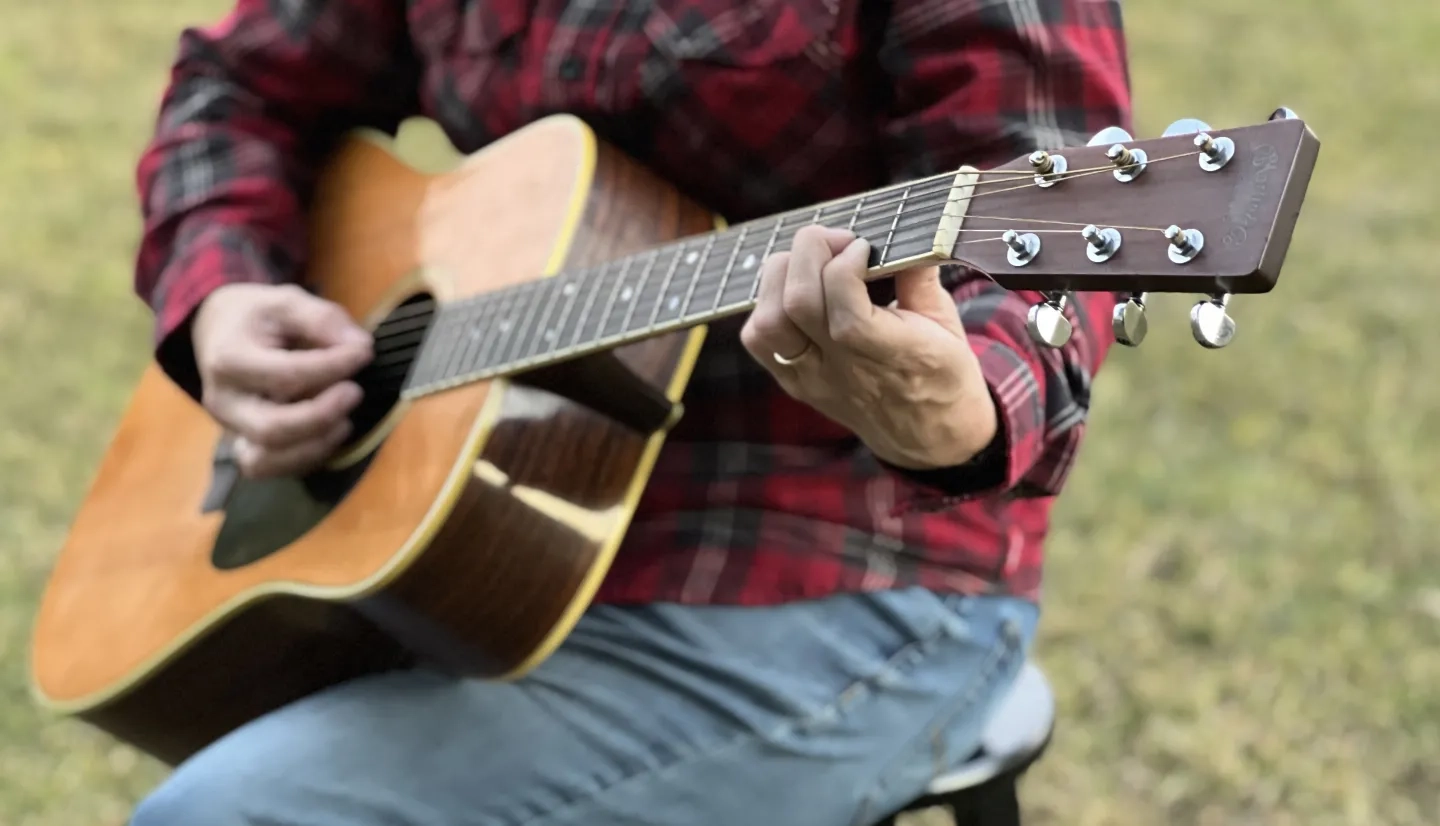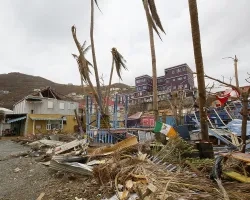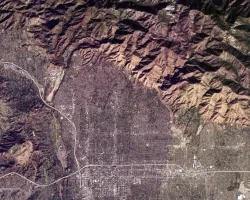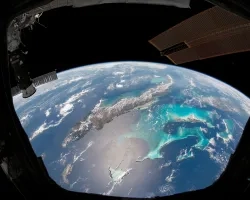As the melodies of nearby Music Row faded into the background, another kind of harmony emerged this week at Belmont University in Nashville, Tennessee. The school played host to a collection of experts in a workshop aimed at collaboratively defining the role of technology in disaster risk reduction (DRR) and providing insight toward guidelines for its responsible and effective use.
The United Nations Office for Disaster Risk Reduction (UNDRR) - Regional Office for the Americas and the Caribbean convened the Technology for Disaster Risk Reduction or "Tech4DRR" Workshop Oct. 10-11 with NASA’s Disasters program and the agency’s Earth Science Technology Office (ESTO), the UNDRR’s Private Sector Alliance for Disaster Resilient Societies (ARISE), and the Scientific and Technical Advisory Group for the Americas and the Caribbean (R-STAG). The hosts also invited stakeholders and experts representing other federal, regional and local government organizations, businesses large and small, non-profits, and academia from as far away as New Zealand and as close as a Nashville regional food bank. Dozens of others joined from around the globe virtually via Zoom, and simultaneous language translation enabled a truly multilingual experience for anyone attending. It was a testament to their shared commitment to harnessing technology for the greater good in the face of increasing disasters.
Counting it Off in Time
The workshop's timing couldn't be more apt, coinciding this week with the UN's International Day for Risk Reduction. This global observance each Oct. 13 aligns with the Sendai Framework, the international agreement to prevent and reduce losses in lives, livelihoods, economies and basic infrastructure. Earlier this year, the Midterm Review of the framework re-emphasized the important role of technology in risk reduction, and participants in the Tech4DRR workshop kicked off the plenary sessions with an overview of the Sendai Framework. The conversations quickly moved to in-depth discussions ranging from technology’s impacts on the vulnerability of communities, to the opportunities and potential risks brought by emergent technologies such as artificial intelligence and machine learning.
Representatives from high-tech companies such as Oracle, Amazon, and Esri joined community humanitarian organizers and academic researchers in energetic and open dialog on topics such as "Unleashing Innovation for Disaster Resilience" and "Bridging Early Warning and Early Action to Ensure Inclusive Resilience." Presenters shared personal stories and lessons-learned from the field, including insights gained in disaster response as well as resilience-building experiences with indigenous communities in Australia and South America, and even experiences from within the local Nashville area. NASA, the United States Geological Survey (USGS) and the Federal Emergency Management Agency (FEMA) shared case studies and innovations aimed at early-warning. Each returned to a powerful chorus on the importance of “reaching people where they are” whether that meant geographically or from a technology readiness standpoint.
Dancing the Two-step Together
The workshop wasn't just about discussions; it was about action. Attendees formed small groups to draft guidelines for responsible technology use in disaster risk reduction, each focusing on specific themes. The insights from the workshop as well as surveys related to these collaborative efforts will be compiled into a comprehensive report that will inform a UNDRR special report on technology for disaster risk reduction. Planned for release in 2024, the report will “analyze the role of technology for DRR in implementing the Sendai Framework for Disaster Risk Reduction; evaluate the challenges and opportunities of integrating technology for disaster risk reduction in the Americas and the Caribbean region and; identify uses, good practices, and recommendations for technology for disaster risk reduction in the region within the disaster cycle.”
For NASA, co-leading the workshop and contributing to the upcoming report are part of deliberate steps on a path to lower barriers and making the agency’s technology more accessible and useful for people worldwide to reduce disaster risk in their own communities.
"The first tangible outcome of the workshop is people being together. We've set up a network now where people are ready to go; they're active," reflected Ben Ryan, a Belmont University professor in the Frist College of Medicine who serves as principal investigator for the research this workshop informs. "It really sets a foundation for us to move forward toward some really tangible outcomes, so that we can really scale the benefits of technology to reduce disaster risk."
Scaling the benefits of technology was a common refrain among all participants of the workshop, and several speakers gave examples of “solutions that resonate” where they were able to leverage a technology originally developed for one purpose – such as tracking meals or vaccines for faster and equitable distribution - and re-purpose that technology for other disaster events. Other themes resonating from the workshop included the importance of education, trust, and inspiration to increase both capacity and commitment at local levels and bolster the sustainability of services.
Belmont University President L. Gregory Jones noted why the university was passionate about hosting the UNDRR workshop. “At the heart of who we are as an educational institution is preparing leaders to find creative solutions to complex problems and to be radical champions for the flourishing of all people.” “By working together and cutting across public and private sector and education, we are going to find ways to produce breakthroughs that we need for the long-term future, and that’s what this gathering is about.”
Three Chords and the Truth
A legendary country songwriter once said, “All you need to write a country song is three chords and the truth.” As technologically adept as the group that convened in Nashville was, they also recognized the value of simplicity and truth. The conversations circled back to how vital it is to earn and keep trust by involving technology end-users at every stage of development, implementation, and maintenance. One participant observed that data can convey powerful messages, but that data needs to be accurate and in formats (such as maps) that are straight-forward and easy to understand. Handwashing and mosquito nets were pointed out as two “technology solutions” from history they can all draw effective and impactful lessons from - in part because of their simplicity. And while, advanced and emerging technologies were a significant part of the discussions, several attendees shared stories about the importance and effectiveness of genuine conversations and honest, long-term relationships with stakeholders.
As the echoes of this pivotal workshop begin to fade, it's clear that what happened in Nashville was just the opening note of an effort the organizers hope will inspire and aid communities worldwide. As the melody of that effort unfolds, all those who participated share a creative vision for world where technology brings a safer and more resilient future for all.







